Cubism and Futurism
1/23
There's no tags or description
Looks like no tags are added yet.
Name | Mastery | Learn | Test | Matching | Spaced |
|---|
No study sessions yet.
24 Terms
Movement: Cubism
Date: circa 1907 to 1914
Info:
Artists abandon perspective & modeling of the body
Emphasis on unity between the depicted scene & surface of the canvas
Paves the way for non-representational (abstract) art
at a fundamental level cubism is interested in the tension between and the analyses of the 2D element of the canvas vs. breaking apart the idea of an illusion of a 3D object “window to the world” How can we break apart a 3D object onto a canvas?
2 phases: Analytic, Synthetic
Artists:
George Braque
Pablo Picasso
Analytic Cubism:
1st phase of Cubism
Deconstruction of objects
Shown from various angles
Related to changes in understanding of space & time
muted colors
Benal subject matters ex: portraits, guitars, still lives
Synthetic Cubism:
2nd phase of Cubism
Construction of objects
every day materials will be cut and glued together to construct the object they are attempting to create
Use of non-art materials (high/low)
Play with abstract sign systems
some general Picasso info:
from the Catalan area of Spain near Barcelona
traditionally trained in art at schools and academies
leaves Spain and goes to Paris,
arrives in Paris with a friend and is a starving artist
begins in a gestural impressionist style
BLUE period- monochromatically blue works, expressive purpose, melancholic subject, matter, existentialism, expressive work
Picasso & Montmartre- epicenter of cabarets and cafes and nightlife, center for avant-guard artists, happier times in Picasso’s life, artistic career starts sustaining, he has a partner
ROSE period- monochromatic pinks, oranges, and corals
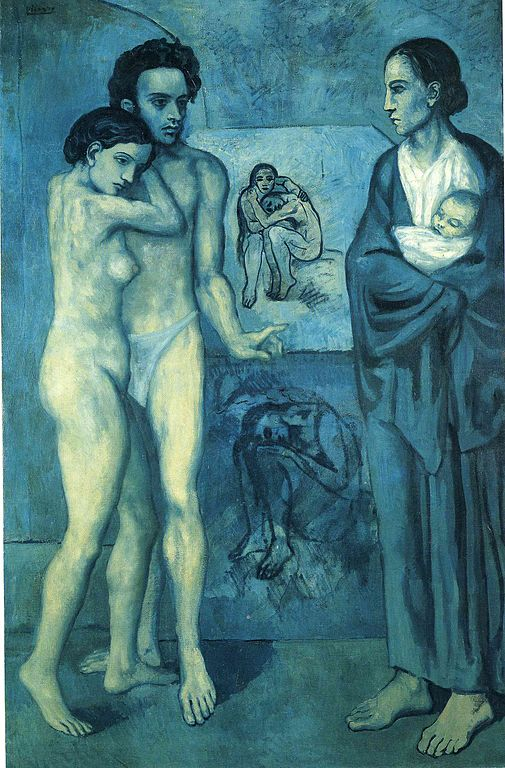
Pablo Picasso, La Vie (Life), 1903
Movement: Picasso working in an expressionistic style
Date: 1903
Artist:
Title: La Vie (Life)
Info:
Blue Period painted in remembrance of his friend who committed suicide, unrequited love, newborn life and death enigmatic pairing,future there never was
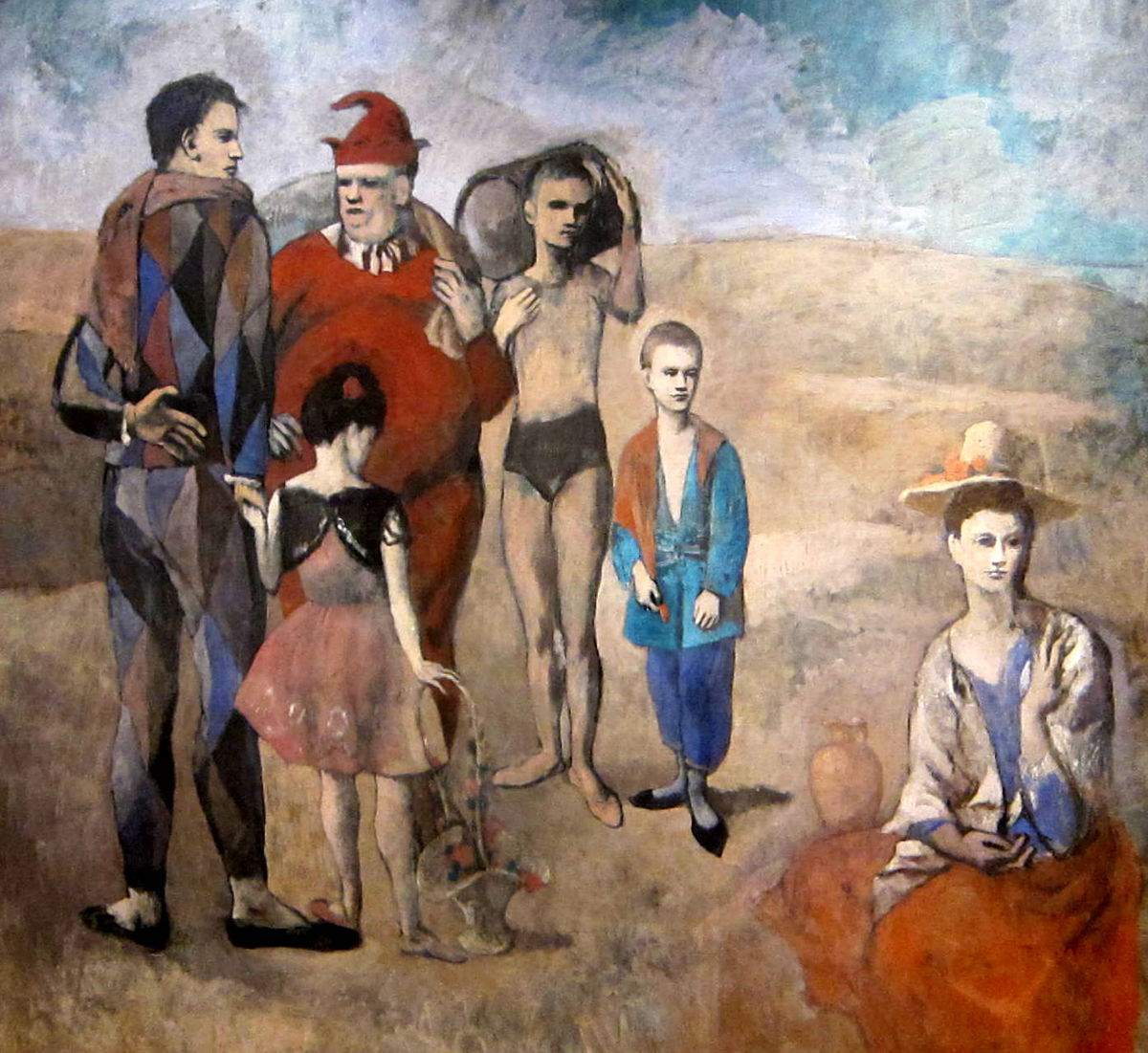
Pablo Picasso, Family of Saltimbanques, 1905
Movement: Picasso working in an expressionistic style
Date: 1905
Artist: Picasso
Title: Family of Saltimbanques
Info:
Rose Period, representation of Picasso on left, circus figures are representations of his chosen artistic family, feeling of outsiderness of being an artist
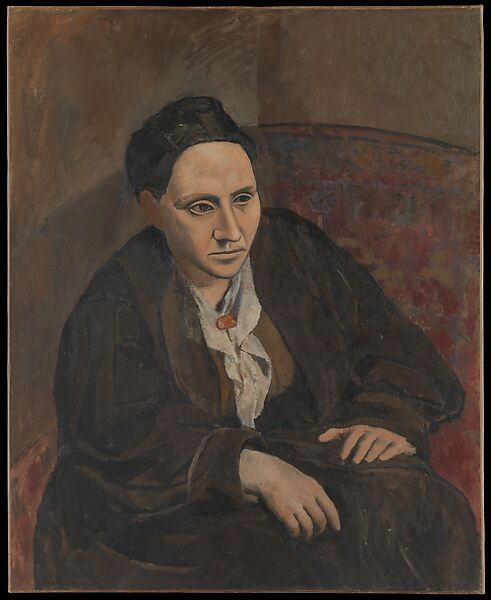
☆Picasso, Portrait of Gertrude Stein, 1906
Movement: early transitional between Expressionist style into Cubism
Date: 1906
Artist: Picasso
Title: Portrait of Gertrude Stein
Info:
she asks for a portrait, she has to continue to sit for this portrait repeatedly for a long time, she’s over it and so he puts it away and its unfinished, pulls it back out and then he paints her from memory depicting who he thinks she is as a person, stern, hunched scowl from where she was getting sick of sitting for him, geometric face- sculptural like dimensionality, planar no soft rounding between the features of her face, stylized, thinking abt Iberian gothic sculptures and African art inspirations, body is a lot more realistic than the face w sense of softness and the gradations in her skin color, she takes up a lot of space - assertive and powerful
begins to break apart the body into angular forms with plans almost like a jigsaw, the faceted planes within the structure of the painting in relationship of the other faceted plans gives it meaning
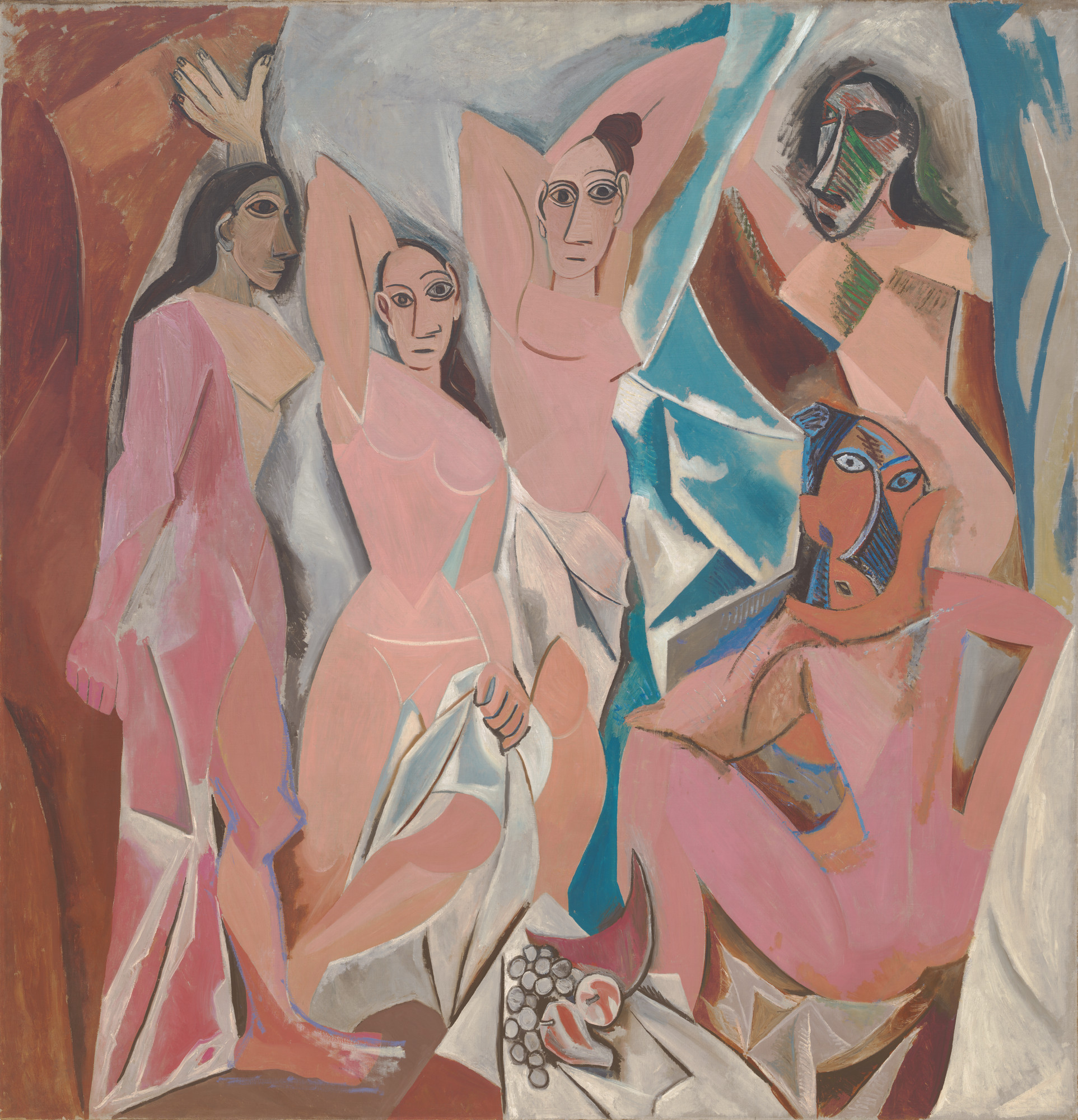
☆ Picasso, Les Demoiselles d’Avignon (The Young Ladies of Avignon), 1907
Movement: transitional between Expressionist style into Cubism
Date: 1907
Artist: Picasso
Title: Les Demoiselles d’Avignon (Ladies of ’Avignon)
Info:
became a famous piece after MoMA bought it and displayed it in its galleries and was hidden away for a long time before that, at a transitional time between his expressive work and cubism, 5 female figures that are prostitutes, (originally the work had a storyline about a sailor and medical student male figures showing ethical or moral dilemma, sailor wouldve been a frequent client and hes in the center, the female figures look off to the side at the medical student maybe hes coming to study the nude body hes innocent and may or may not enter the scene) gets rid of the male figures and whole painting becomes about the prostitutes, disfigured disinformed and scarily depiction, no assertion of identity of self or a come hither, violent and aggressive w sharp angular shards and increasingly so towards the right of the painting, appropriates african masks- Pende Mbangu Mask, no space to enter into this painting pushed into foreground w flattened angular shards everywhere, villainizes the prostitutes because they carry STD’s and potentially death– death becomes woman, controversial so he decides to store it away from the public eye bc people thought it was too disturbing, pushing avant garde form, depiction of modern life moment, supposedly responding to Matisse’s Joy of Life, now no longer thought to be Picassos break thru Cubist work and is more of a transitionary phase in between Expressionism
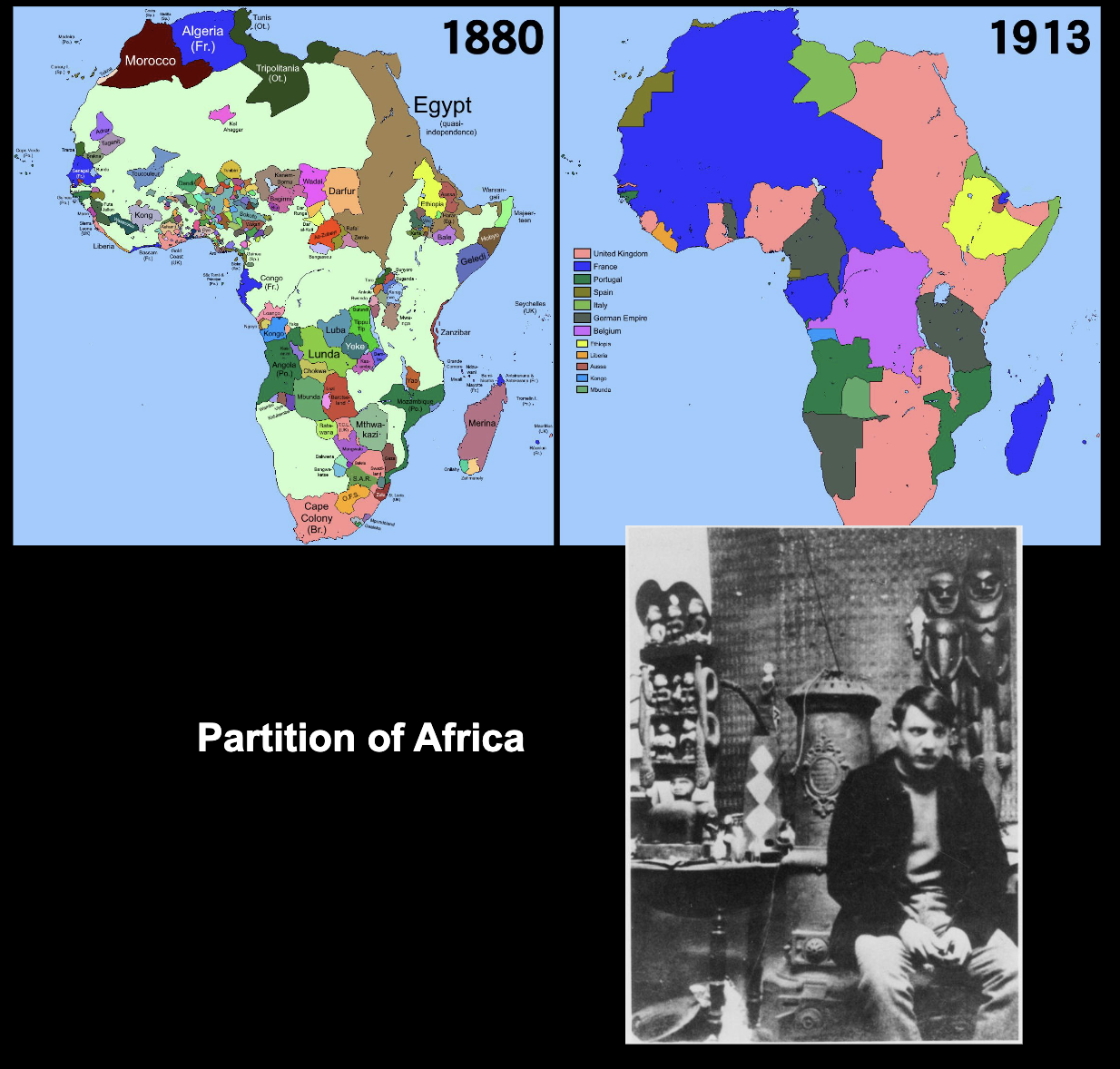
Scramble to Partition & Occupy African Territory (1860-1914)
-Especially acute between 1870-1914
-Typically seen as an extension of the rivalry between industrializing European powers
-Important early events: French anger re: the British occupation of Egypt in 1882 & Congo Basin rivalry b/w France & Belgium
-The processes of colonialization were
already evident in Africa before this period
including the formation of formal colonies by
France & Britain
-Local trade rivalries exacerbated these
tensions and were becoming increasingly
ineffective in the face of European economic
pressures.
- By the end of the 1870s, Britain & France
were already in control of most of the West
coast & advancing inland.
-By the beginning of WWI, most of Africa was
under European rule.
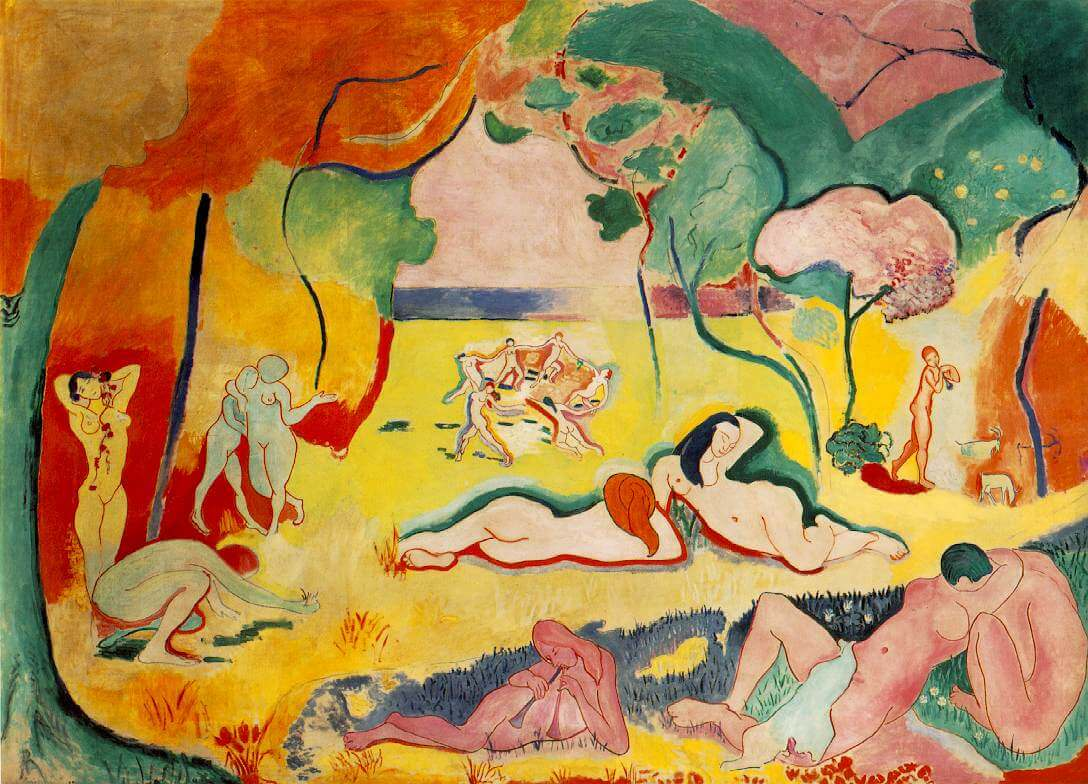
Practice Visual Analysis Comparison
Matisse, Bonheur de vivre (The Joy of Life) vs Picasso, Les Demoiselles d’Avignon (The Young Ladies of Avignon)
Similarities:
nude female figures depicted in a non-traditional way
shifting towards abstraction
expressive qualities
flatness
range of colors
Differences- Matisse, Bonheur de vivre (The Joy of Life):
1905-06
nymphs- acceptable subject matter
myth
showing joy of life thru color
happy, whimsical, joyful, soft, sensual
curvilinear lines and forms
sexuality is freeing and beautiful
can enter into and explore the space
Differences- Picasso, Les Demoiselles d’Avignon (The Young Ladies of Avignon) :
1907
prostitutes- controversial to depict
modern moment
showing 3-dimensionality through form
cynical, aggressive, villainous
straight, diagonal, angular lines
sexuality is something to be feared and avoid, it’s pornographic and leading to death
can’t enter the space
Ex of a Thesis:
We are looking at two works depicting nude female figures with one focusing more on color and one focusing more on form.
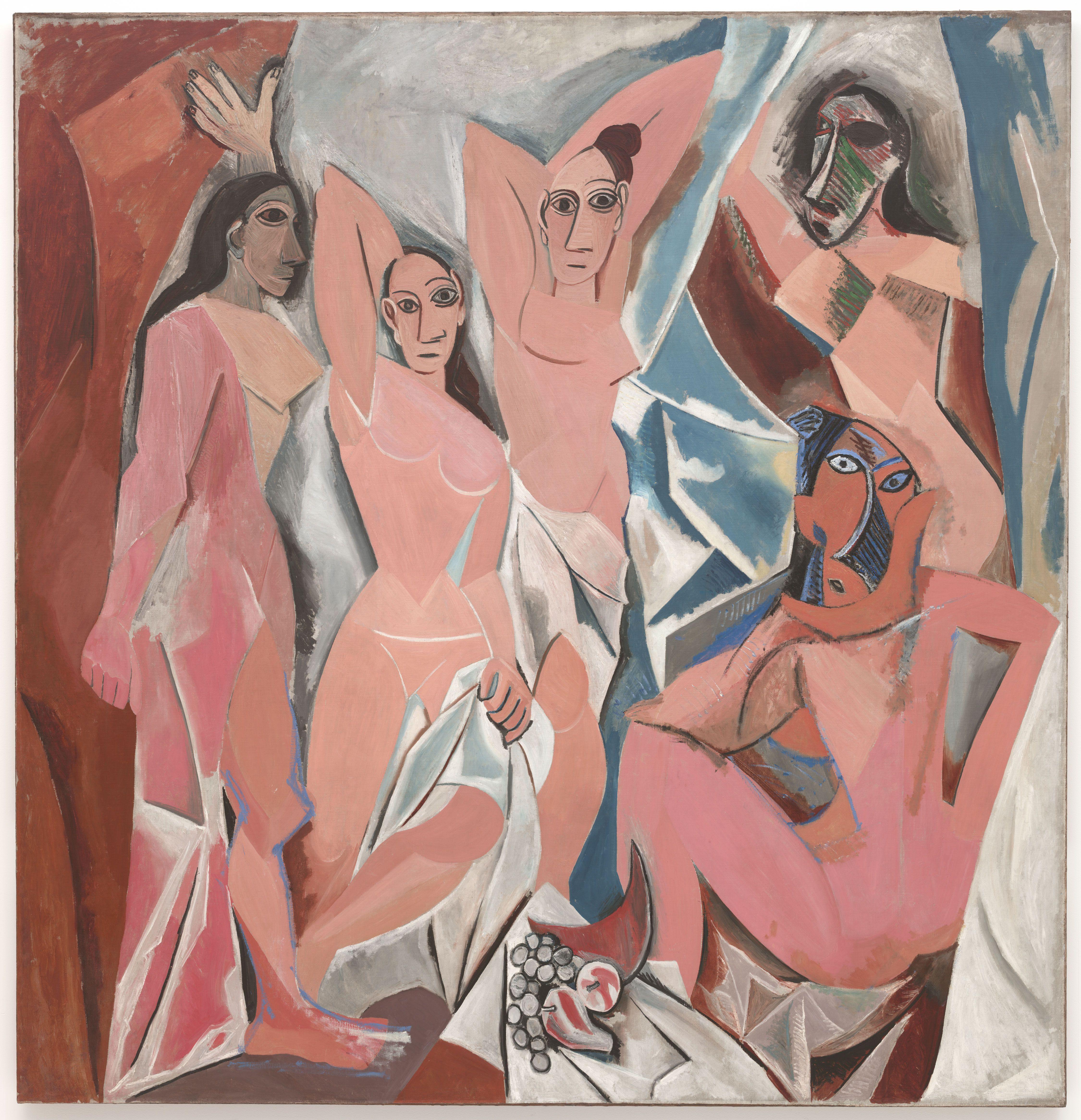
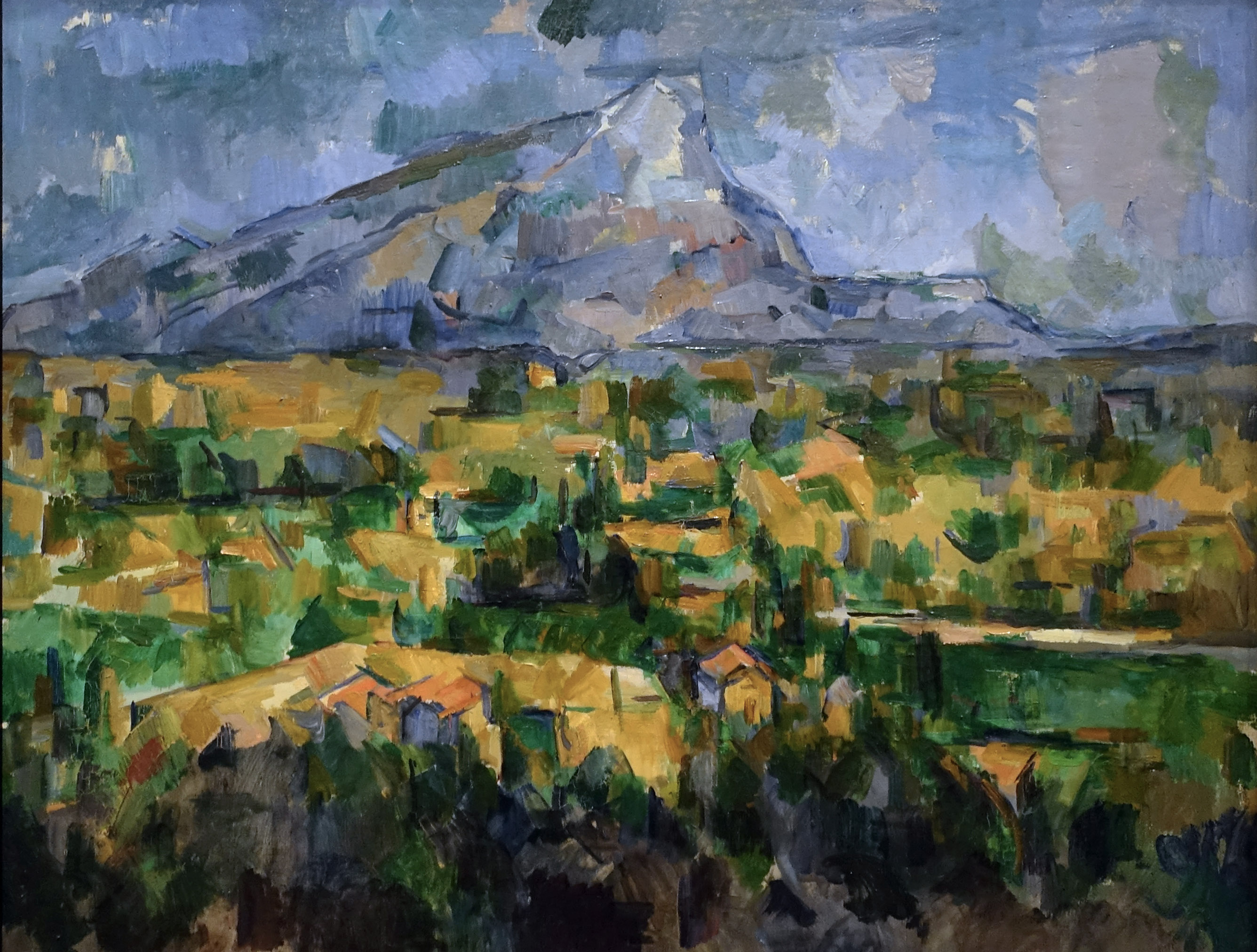
1907 Cezanne Retrospective - Salon d’Automne
George Braque and Picasso become neighbors and they see this retrospective which moves them to cubism, they see how you can see multiple perspectives in the work ex: Mont-Sainte Victoire
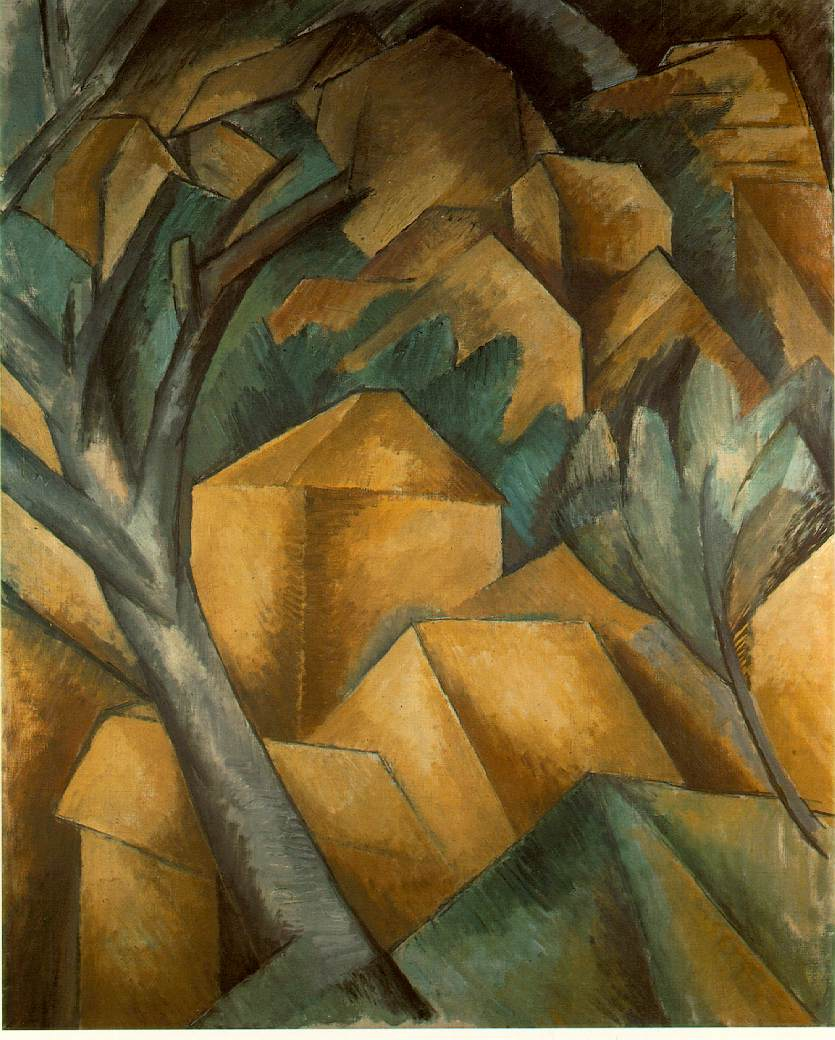
☆Georges Braque, Houses at L’Estaque,1908
Movement: Cubism
Date: 1908
Artist: Braque
Title: Braque, Houses at L’Estaque
Info:
informed by seeing Cezzane’s work, skewed perspectives by rolling the houses out so we see multiple all at once, about the experience of the houses not just a depiction of them
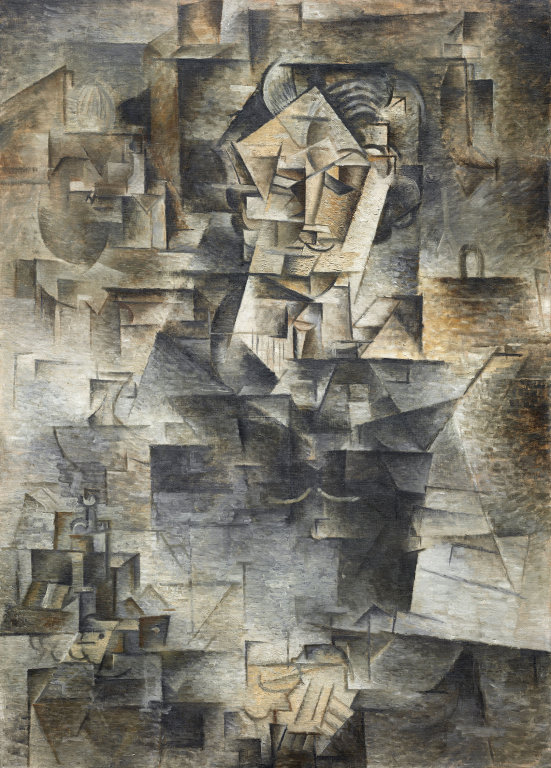
☆Pablo Picasso, Portrait of Daniel-Henry Kahnweiler, 1910
Movement: Cubism (Analytic)
Date: 1910
Artist: Picasso
Title: Portrait of Daniel-Henry Kahnweiler
Info:
depicts gallerist for Picasso and other avant guarde artists at the time, can make out a face in upper half of canvas, no illusion of 3 dimensionality, flattened surface showing multiple sides of Kahnweiler, introduces concept of time into the canvas but Picasso does not explore this further, the relationship between figure and ground are one in the same, kaleidoscopic fragmentation of the piece creating a sense of moving rhythm across the canvas
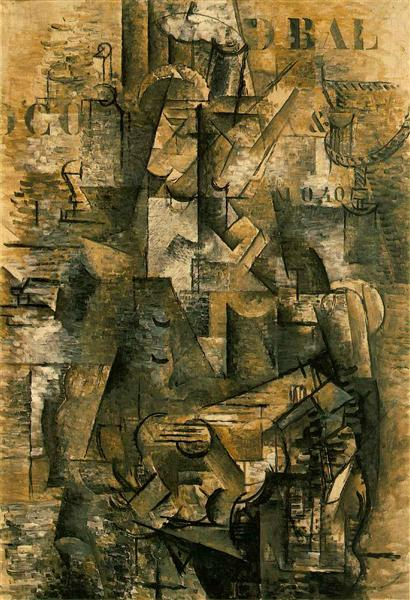
☆Georges Braque, The Portuguese (The Emigrant), 1911
Movement: Cubism (Analytic)
Date: 1911
Artist: Braque
Title: The Portuguese (The Emigrant)
Info:
introduces text into the cubist conversation which reinforces the flatness, guitarist playing guitar, very very abstracted forms, collapse of figure and ground
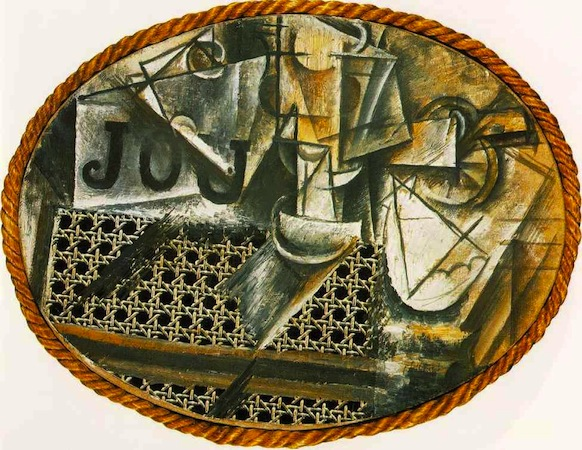
☆Pablo Picasso, Still Life with Chair Caning, 1912
Movement: Cubism (transition into Synthetic)
Date: 1912
Artist: Picasso
Title: Still Life with Chair Caning
Info:
half painting half other materials, pasted in chair caning wallpaper, rope around the edge, newspaper rolled up with first part of journal in text JOU, lemon/citrus with knife in left corner, at cafe table with view top down and through the table, maybe a glass top table, ovular canvas with rope wrapping like a porthole window type shape, different registers of looking/vision that Picasso is playing with - playing with idea of painting as a window to the world, the mass-produced chair canning wallpaper offering the idea that an artists purpose is no longer to depict something realistic because now machines can- artist’s purpose is visual analysis/ say something new/ explore materials

☆ Pablo Picasso, Guitar, Sheet Music, and Wine Glass, 1912
Movement: Cubism (Synthetic)
Date: 1912
Artist: Picasso
Title: Guitar, Sheet Music, and Wine Glass
Info:
collaged, wallpaper mimicking wood, decorative wallpaper, sheet music, construction paper, part of a newspaper, collapsing of subject and background, playing with negative and positive space all at once, shapes relation to one another inform how they are perceived
Movement: Futurism
Date: begins in 1909 but project is cut short by the beginning of WWII
Info:
Marinetti publishes the Futurist Manifesto in Le Figaro (French newspaper)
Want to eradicate the past
Celebrate the future (particularly through technology)
later on take on some fascist overtones
many of the Futurists glorify war as a way to wipe out the past to bring the future
Interested in light & movement
take the geometric plans of cubism but introduce the concept of time and speed in their works
Key concepts: simultaneity & dynamism
See Cubism in 1911 at the Salon d’Automne in Paris, changing the aesthetic course of the movement
Artists:
Filippo Marinetti
☆Umberto Boccioni
☆Giacomo Balla
Gino Severini
Carlo Carra
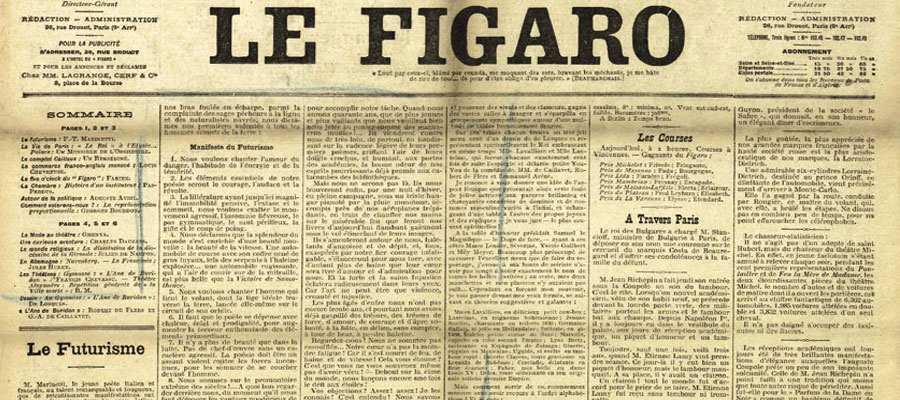
Futurist manifesto published in Le Figaro newspaper
by Filippo Marinetti (futurist)
lashes out against
tradition: calls for the
destruction of museums,
libraries, and monuments
Argues that agitation and
revolution will allow for a
clean-slate
Internationalist impulse
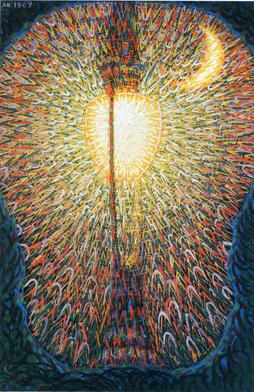
☆ Giacomo Balla, Street Light (Lampada - Studio di luce), 1909
Movement: Futurism
Date: 1909
Artist: Giacomo Balla
Title: Street Light (Lampada - Studio di luce)
Info:
representation of a street light - important piece of technology that helps to shape and reframe the city, emphasizes the “new future” of street lamp while it outshines the moon “old technology”, utilizing post-impressionist styling of painting
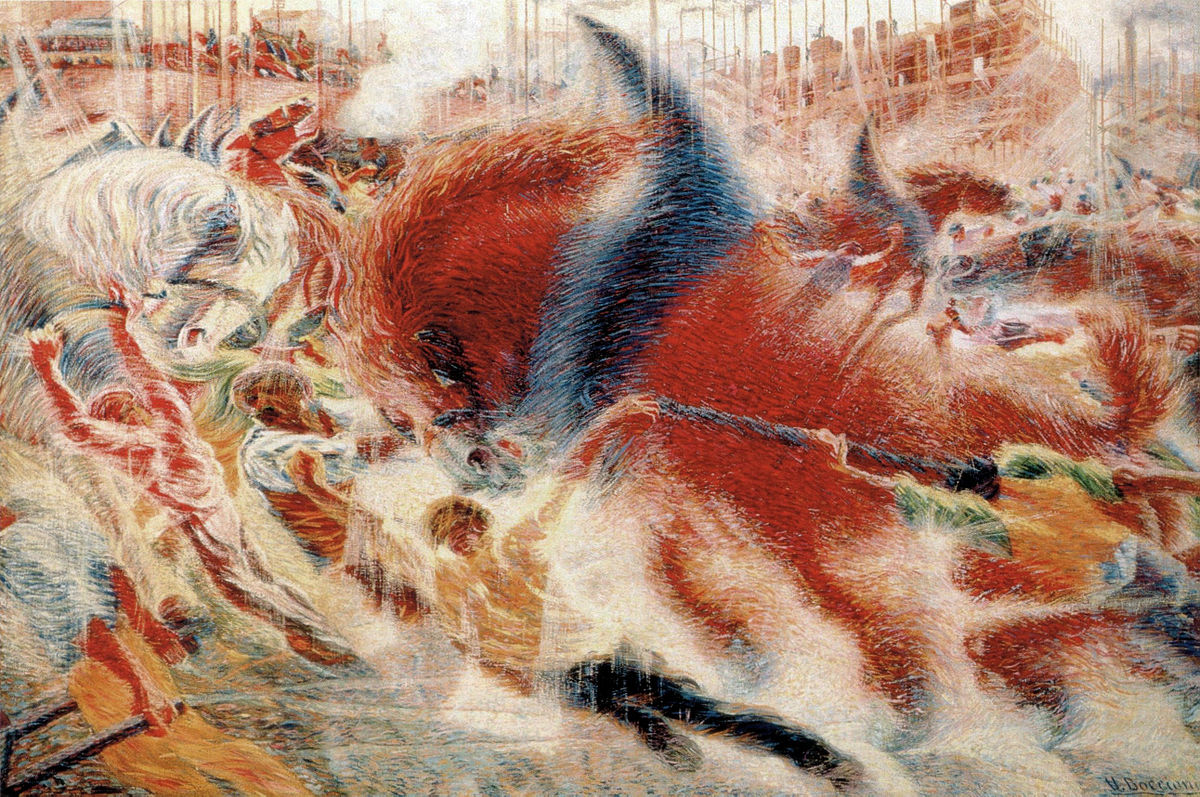
Umberto Boccioni, The City Rises, 1910
Movement: Futurism
Date: 1910
Artist: Umberto Boccioni
Title: The City Rises
Info:
post-impressionist type style, movement towards the future, tension between the mode of painting being “older” and move towards the future
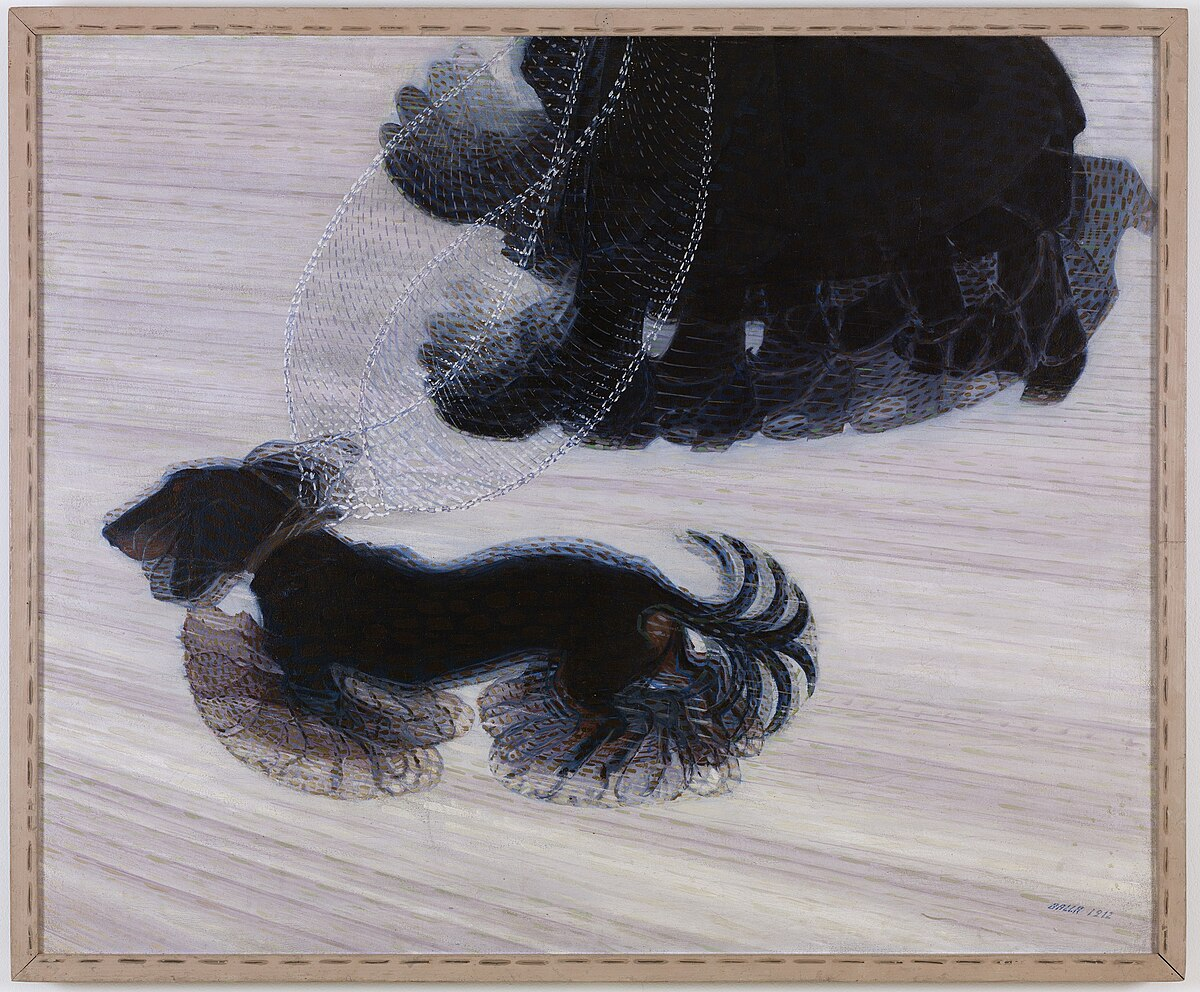
Giacomo Balla, Dynamism of a Dog on a Leash (Leash in Motion),1912
Movement: Futurism
Date: 1912
Artist: Giacomo Balla
Title: Dynamism of a Dog on a Leash (Leash in Motion)
Info:
the movement of a dog on a leash, multiple moments in time and frames caught together
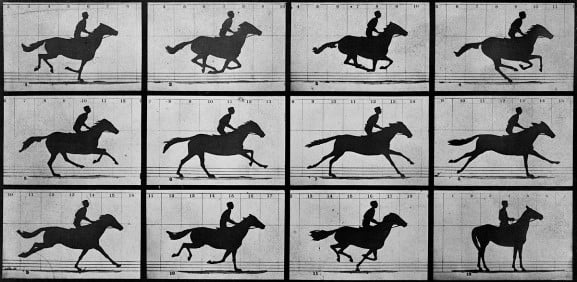
Muybridge, Marey, & time-lapse photography
studies if horses ever have all 4 legs off the ground, leads him to make many pieces showing movement and time, catch the eye of the futurists
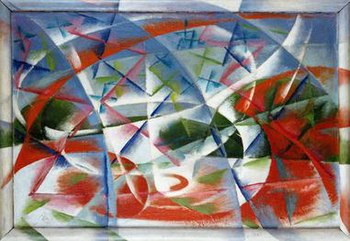
Balla, Abstract Speed + Sound, 1913-14
Movement: Futurism
Date: 1913-14
Artist: Balla
Title: Abstract Speed + Sound
Info:
wants to represent just speed and time and get rid of narrative elements and concrete subject matter, shows these thru form line and color
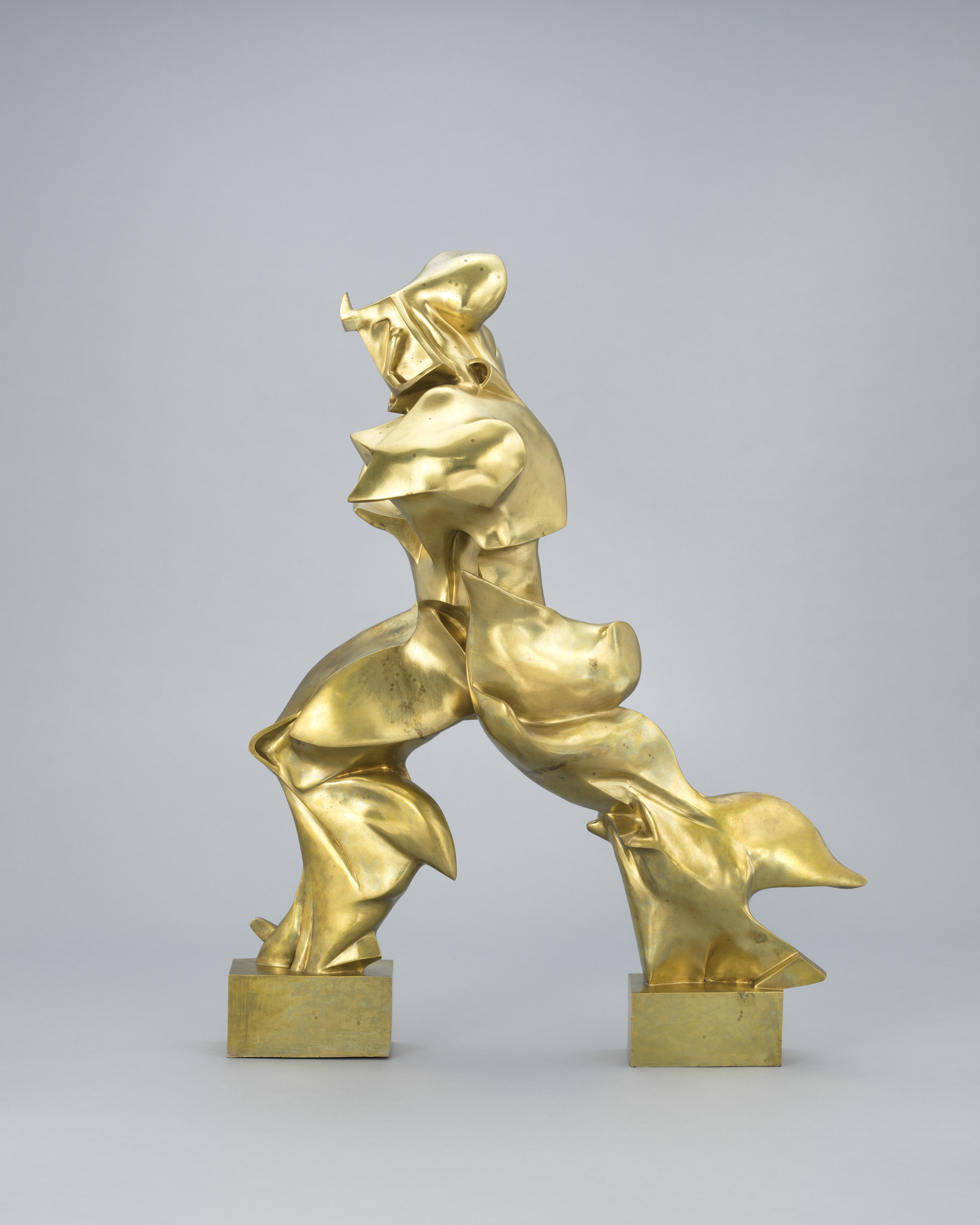
☆ Umberto Boccioni, Unique Forms of Continuity in Space, 1913
Movement: Futurism
Date: 1913
Artist: Boccioni
Title: Unique Forms of Continuity in Space
Info:
man walking in space pushing against the wind and so dramatically that parts of him are billowing behind him, speed, human figure of faceted plans, machine-like body, aggressive overtones